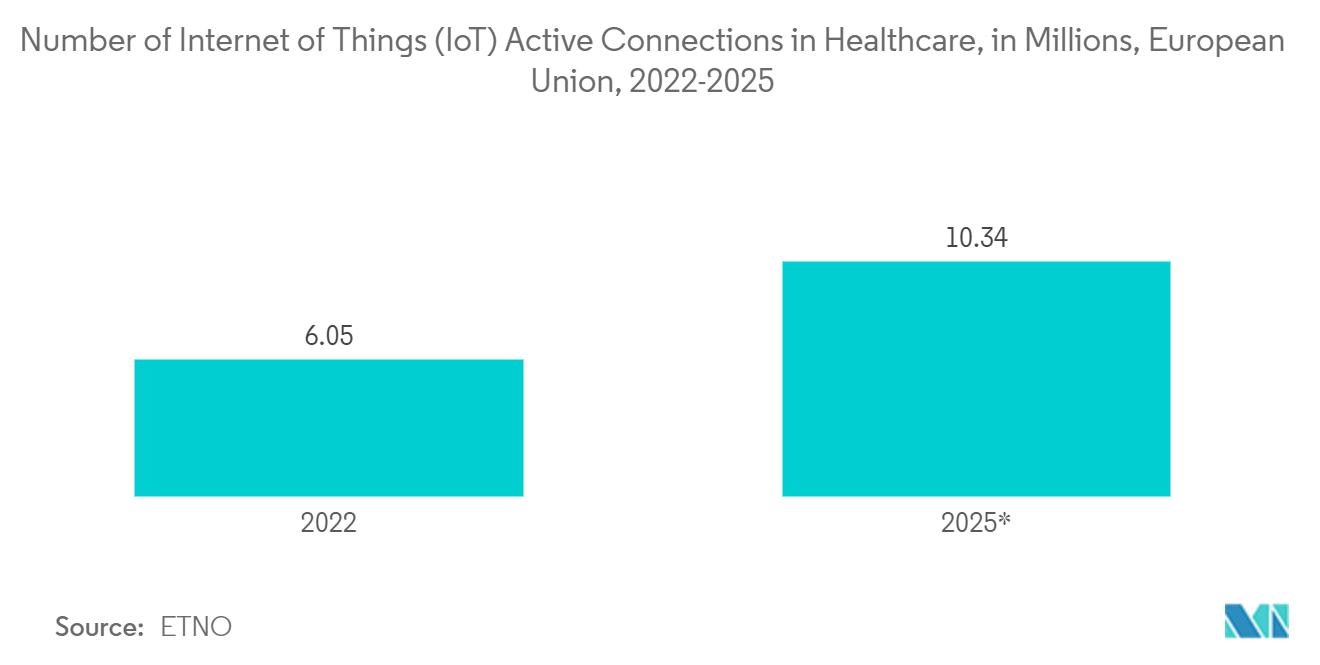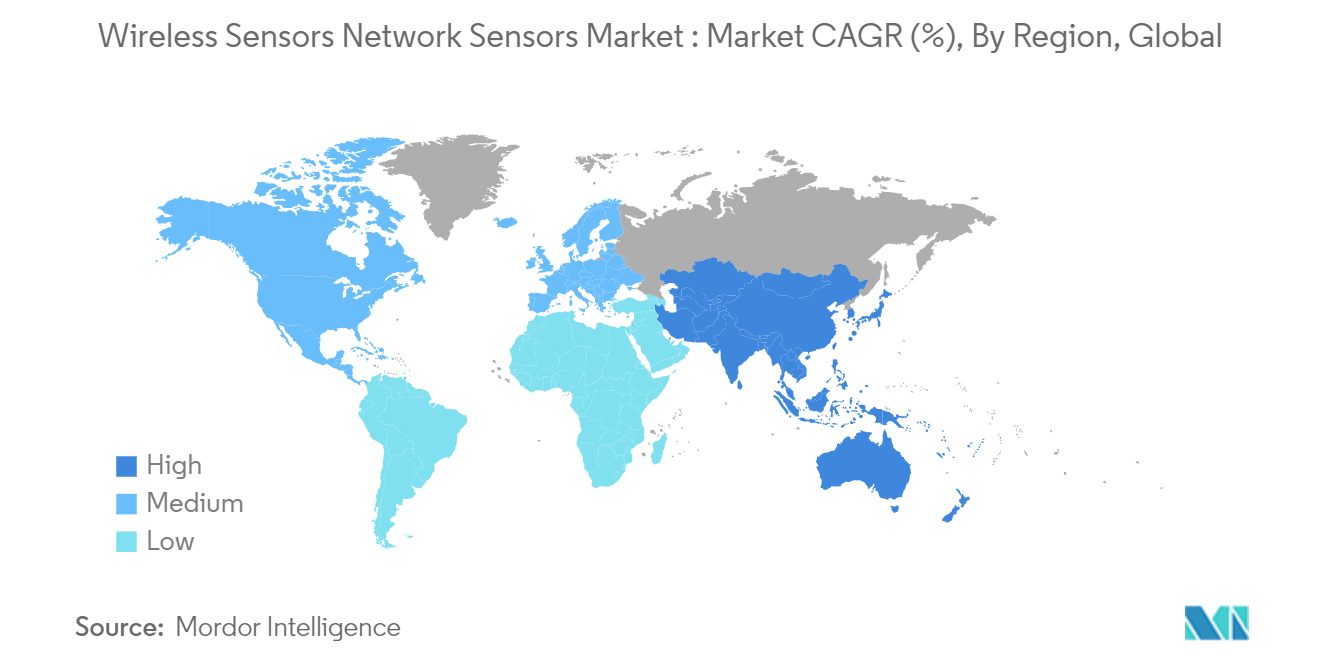Market Trends of Wireless Sensors Network Industry
Medical Segment is Expected to Witness Significant Growth
- There are several issues facing the healthcare industry: soaring costs, growing incidences of medical errors, staffing shortages, aging populations, etc. Despite the challenges, healthcare professionals are under pressure to deliver improved services while at the same time adopting modern technologies. Long-term costs can be decreased, and the quality of services can be improved by offering ubiquitous healthcare. Wireless sensor networks can provide efficient solutions to an increasingly widespread healthcare system.
- Due to advances in sensors and network technologies that do not use much power, WSNs for healthcare have begun to emerge in recent years. The wireless sensor network is frequently emerging as a significant component of the next-generation healthcare system. They are a multihop Zigbee-based system that uses multicasting or broadcasting to deliver vital information. The speed and reliability of messages is an essential feature of such a system.
- They relate to the collection of real-time health information from various sensors. Wireless protocols, radio spectrum, data bandwidth, encryption, energy consumption, and mobility are essential features of these networks.
- With the development of wearable sensors, users can constantly monitor physiological data aided by wireless sensor networks in healthcare. During patient hospitalization or residence, a body area network will continue to monitor their health. This service may be helpful in emergency cases when it transfers data on patients' condition to a healthcare provider. Providing healthcare services for people, including memory enhancement, health data access, cancer detection, asthma symptoms, and blood glucose monitoring, can also be helpful.
- In addition, a new Internet of Medical Things has been set up in conjunction with telemedicine and will play an important role in the monitoring and prevention of diseases, RBSA Advisors reports. Analytics, tools, and machines driven by artificial intelligence can help healthcare providers select the right approach for each patient regarding more effective, accurate, and impactful interventions.
- In India, emerging technologies are helping the development of novel and better treatments while lowering costs. Over the next few years, artificial intelligence (AI), data, and IoMT will have swiftly expanded from simple devices that are designed to track vital signs such as heart pump rate and blood oxygen levels to smartwatches that are capable of even complex scans such as ECGs and smart textiles that can track blood pressure and also predict the risk of heart attacks.

North America Holds Largest Market Share
- North America is expected to be an important market for wireless sensor networks during the forecast period, as it is at the very early stage of adopting cutting-edge technologies like smart cities and building and industry automation. In addition, the WSN market’s growth in the region is expected to be driven by technological advances in healthcare infrastructure and increasing consumer interest in wearables.
- The adoption of smart factories, intelligent manufacturing, and the presence of many industrial wireless sensor network manufacturers are expected to drive the growth of the North American market in the coming years. The presence of several key players, such as ABB Ltd, Emerson Electric Co., and Honeywell International Inc., is also expected to prompt market growth in this region.
- Wireless sensor networks were used in health applications to provide impaired interfaces, integrated patient monitoring, diagnostics, and drug administration in hospitals, telemonitoring of human physiological data, and tracking and monitoring of doctors or patients within a hospital.
- The North American freight railroad industry is also trying to leverage WSN onboard railcars for advanced monitoring and alerting. In railroad environments, freight train WSNs exhibit a linear chain-like topology of significant length.
- Furthermore, with the increasing penetration of wearable devices in the commercial market, wearable devices are also becoming increasingly popular for industrial usage due to their numerous benefits. For instance, Airbus implemented wearable devices in the aerospace and defense industries in collaboration with Accenture.


